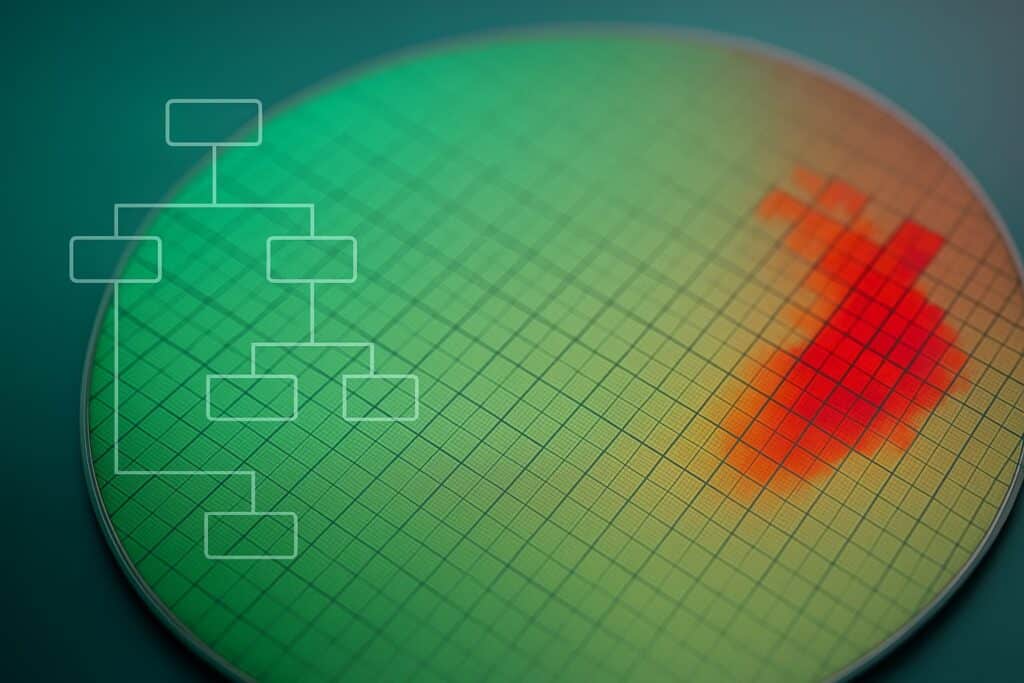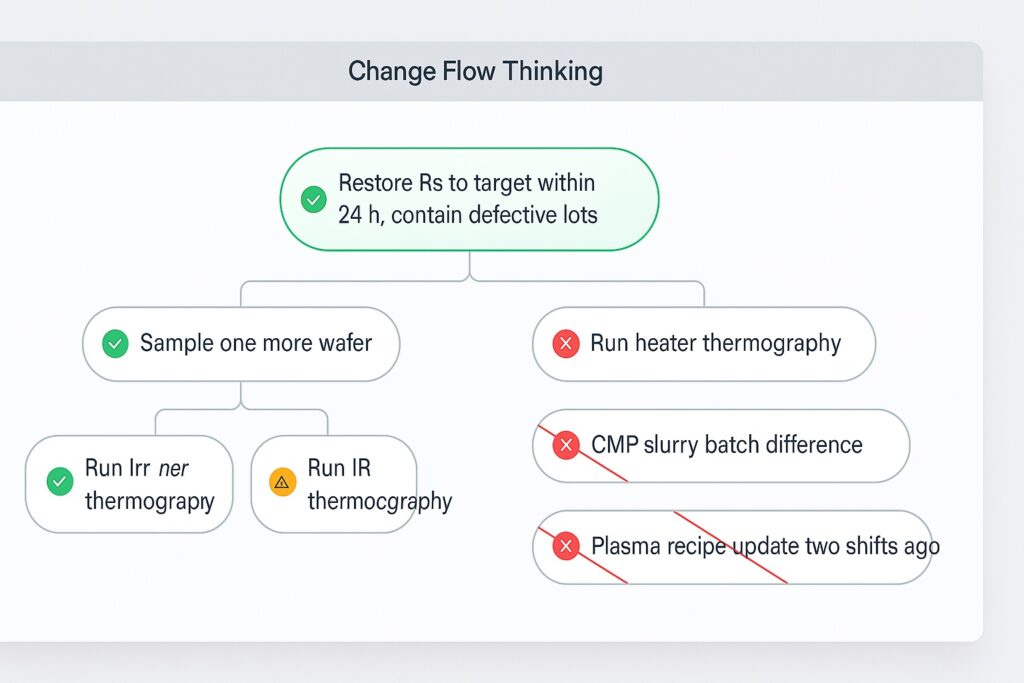
In manufacturing, especially in high-stakes industries such as semiconductors, even minor process variations can rapidly escalate into costly yield excursions, significantly impacting margins and production schedules. These excursions occur when a seemingly small issue, such as subtle equipment drift or minor material inconsistencies, triggers extensive scrap losses, delays, and unanticipated costs. Preventing yield excursions before they escalate requires rigorous risk management and proactive response planning. One method increasingly favored by manufacturing leaders is Change Flow Thinking (CFT), a structured, visual approach that allows teams to anticipate and mitigate risks early.
Yield excursions start innocently, often with minor deviations in the production environment. For instance, in semiconductor manufacturing, a slight contamination or a minor equipment miscalibration can compromise multiple production batches before being identified. Without early detection and effective containment measures, these issues compound, triggering extensive financial and operational disruptions.
CFT is a visual, systematic tool developed by PRIZ Guru designed to streamline the planning and implementation of complex changes with minimal risk and cost. It offers a clear visualization of tasks and potential variations, mapping out every step, decision, and contingency in a logical sequence.

By breaking down large, complex changes into small, actionable steps, teams can systematically address and manage risks, ensuring critical details are not overlooked. Each step is rigorously evaluated and labeled as either:
This clear categorization enables immediate identification of high-risk areas, prompting proactive measures rather than reactive troubleshooting.
Consider a semiconductor manufacturer facing yield losses due to a subtle material inconsistency that wasn’t caught in initial inspections. Traditional processes might only detect such variations after significant damage has occurred. By contrast, implementing CFT from the onset enables the identification of this variation much earlier:
This proactive approach significantly reduces the extent and impact of the yield excursion, containing it before it results in massive losses.
CFT provides a dynamic, living blueprint that enhances real-time response capability. Teams across different functions collaborate within the platform, ensuring that risks identified in one area are instantly visible to all stakeholders. This transparency means corrective actions are rapidly coordinated, preventing issues from snowballing into broader crises.
For COOs and CFOs, the financial implications of yield excursions are clear and significant.

By embedding CFT into manufacturing processes, organizations can:
Change Flow Thinking is more than a tool; it’s a strategic approach that enables manufacturers to preemptively manage risks, maintain stable production yields, and protect quality budgets. By fostering a proactive, risk-aware culture, CFT not only prevents costly yield excursions but also strengthens overall organizational resilience, turning quality assurance into a strategic asset rather than a reactive necessity.